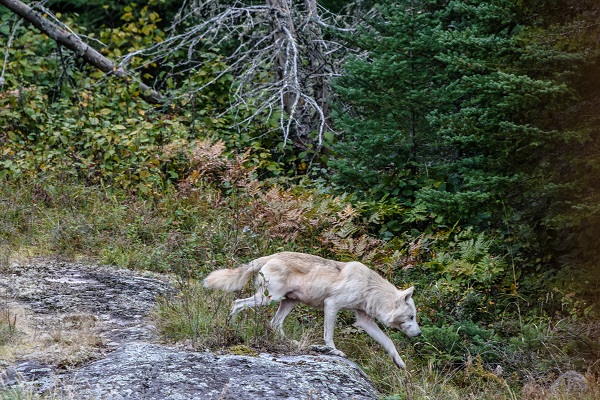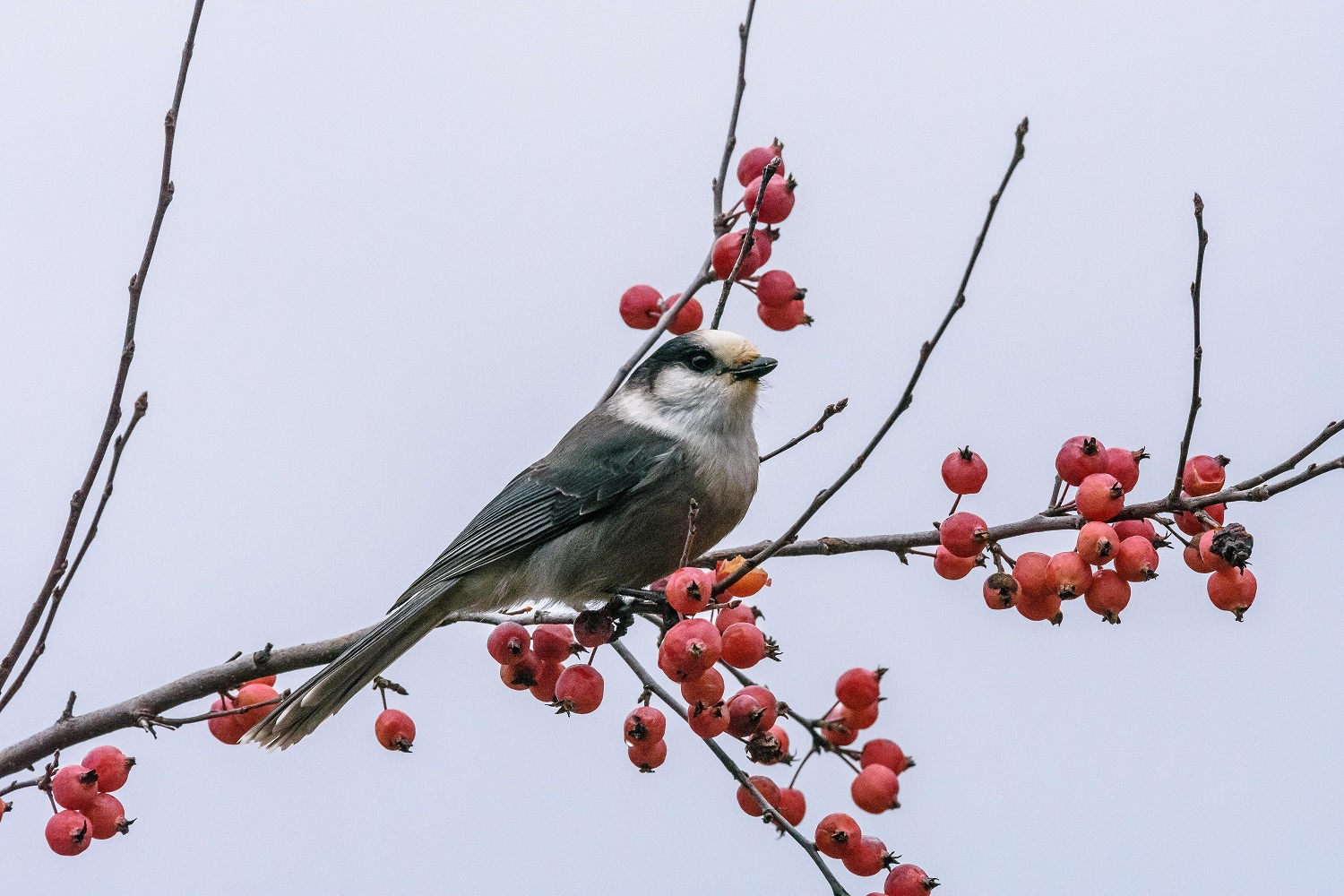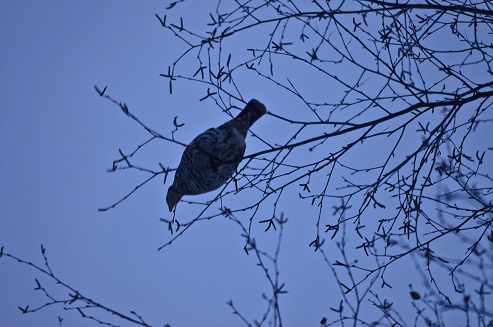Here’s an article I had published in the Spring 2023 Issue of ‘Lake of the Woods Area News’, a local Northwestern Ontario stewardship association magazine. Some of the photos in this blog were not a part of the published version.

Wolves occur in North America, Europe, Asia and North Africa. According to some, there are three species and close to 40 subspecies of wolf. Others believe there is only one species of wolf – the Gray (or Timber) Wolf (Canis lupus). As all three wolf species and sub-species are believed to be able to interbreed and produce viable offspring, I’m in the camp that says there is only one species of wolf.
There is widespread acceptance that wolves and coyotes (coyotes are only found in North America) are separate species, although the situation is not cut and dried. For example, weights of adult Gray Wolves are reported to be between 40 – 175 lbs (18 – 80 kg), while coyotes tip the scales from 20 – 40 lbs (9 – 18 kg). Wolves in the 40 lb range are often referred to as ‘brush wolves’.
Gray wolves are typically gray in colour, but black, white, creamy coloured and reddish-brown wolves are not uncommon.



A lot of people have an interest in wolves. It’s not surprising, nor should it be. Wolves have a long relationship with humans – our pet dogs are their direct descendants.
Wolves are carnivores that rely upon meat (but not exclusively) to survive. Sometimes wolves – and coyotes – kill people.
Nowadays, wolves seldom attack people. But in Old World history, wolves often attacked and killed people. In France there are about 9,000 recorded wolf attacks between the 17th and 19th centuries. Between 1764 and 1767, about 100 men, women and children fell victim to something called the Beast. The Beast is presumed to have been a wolf; some say it may have been a werewolf.
Wolves (Ma’iingan in Ojibwe; Mahihkan in Cree) are prominent in North American Aboriginal cultures. For some, their relationship with wolves is sacred; in others, wolves are treasured as a brother or a sister. In general, Aboriginal people tend to not hurt any wolf.
There is a belief that the wolf was the creator of the world and a guardian of the underworld. Part of Ojibwe culture has their fate and that of the wolf intertwined. It’s been said “As the wolf goes, so go themselves.”
In Inuit mythology, the gigantic wolf spirit, Amarok or Amaroq, is often described as a giant wolf that devours hunters reckless enough to go out hunting alone at night.

Wolf numbers decline
Overseas, wolves were feared and were a nuisance for those who raised livestock; Europeans and their neighbours hunted wolves relentlessly. In Britain, it’s believed wolves disappeared sometime in the 1700s, following centuries of persecution.
Unrelenting hunting pressure took a toll. By the End of World War II, wolves had been extirpated from all of central Europe and most of northern Europe.
Europeans brought their distaste of wolves with them when North America was colonized. It’s thought that about 2 million wolves once roamed North America, but by the 1960s they were gone from all the lower 48 except for Michigan’s Isle Royale National Park and parts of Minnesota. They were still common in Alaska; in Canada wolves remained common, but did become absent or rare in large swaths of countryside
In the 60’s, public sentiment about the environment began to shift. This included a much more tolerant attitude towards wolves. Worldwide, many countries enacted tougher legislation and regulations on hunting and trapping that helped provide wolves with opportunities to recover.
Unequivocally, wolf populations are recovering. Still, they currently occupy only about two-thirds of their former, historic, worldwide range; a meagre 10 percent in the continental USA.
Here in Northwestern Ontario, wolf populations continue to thrive, despite decades of hunting, trapping and poisoning. Hunting and trapping is still permitted; however, rules and regulations have been tightened considerably and wolves killed by humans are much reduced from the days of airplane hunting.
Today, the resident attitude about wolves is largely positive, interspersed with reasonable trepidation.

New times
The wolves in this region survive largely on a diet of deer, moose and when available, beavers. Further to the north, caribou are a favoured prey. Of course, wolves catch and kill other animals, including bears. As detailed in Farley Mowat’s fictional book Never Cry Wolf, even mice might do in a pinch.
Wolves consume blueberries and other types of foods that aren’t meat, in moderation.
Some wolves turn to scavenging. They can be regular customers at dumps and landfills, spending time and effort scrounging for scraps.
Wolves are of concern to local livestock and to much dismay, seem to be particularly fond of (hu)man’s best friend.
Such traits are not particularly endearing. It’s very distressing to see or hear about a much beloved family pet being snatched by a wolf when out for a walk. Such attacks may be somewhat uncommon, yet consistently recur.
While less traumatic, it can be unnerving and menacing to see a wolf in the yard or on the street. People think these are places where wolves don’t belong.
Having been given a chance, wolves are adapting to living in close contact with people.
But living in close proximity to wolves is not without risk.
It was recently reported that the European Commission’s President Ursula von der Leyen’s prized horse Dolly, was killed by a wolf just 300ft from her home in northwest Germany.
While unpalatable to some, regulated hunting and trapping of wolves appears to be necessary to keep wolf numbers in balance with societal mores.

Ups and downs
Wolf populations tend to fluctuate with prey abundance.
When white-tailed deer numbers exploded in Northwestern Ontario several years ago, wolf populations followed suit. Wolf sightings by deer hunters, reported on Ministry of Natural Resources postcard surveys, increased by more than 500% in less than 10 years.
In addition to the abundance of prey, wolf numbers are kept in check by wolves themselves. Studies have shown that wolves are pack animals with territories they defend. A pack can be as small as 2 animals; large packs may have more than 30 members! About a dozen is the average.
Most wolf packs consist of two parents and their puppies, including one to three year old offspring that have not yet headed out on their own. David Mech, a well-known wolf researcher, called pack leaders alpha animals in his early research, but later recanted on that theory.
Most now believe the adults are in charge simply because they are the parents of the pack.
Wolves leave the pack for a variety of reasons. One is to look for a mate and establish a pack of their own. Wolves may kill other wolves to claim territory.
Some move great distances. In four months, one left the Algoma area and went east 2,500 km to establish a territory in Quebec. One collared in Michigan travelled 6,800 km in a year and a half. It passed through Wisconsin, Minnesota, North Dakota, Ontario and finally Manitoba, where it was shot (legally) in the Whiteshell.

Other radio-collared wolves have been tracked moving between Riding Mountain National Park in Manitoba and the Boundary Waters in Minnesota, traversing Lake of the Woods.
For interesting, locally pertinent information about wolves, check out https://www.voyageurswolfproject.org/.
We may not like everything about a wolf, but the presence of wolves makes the world a better place.

















































